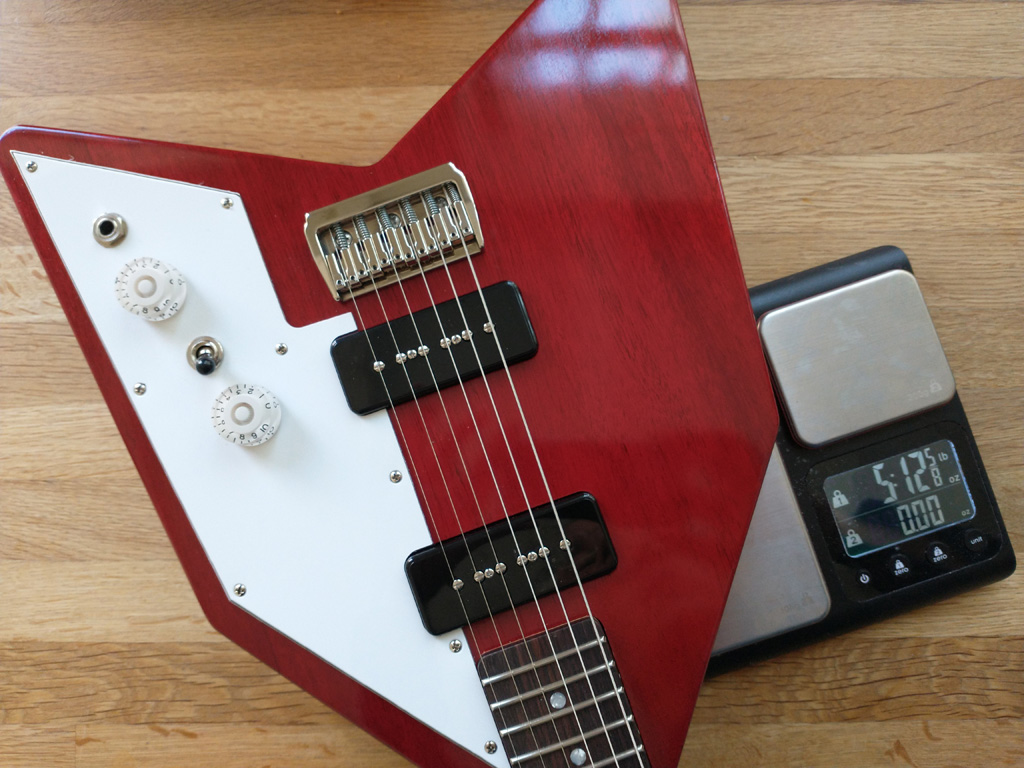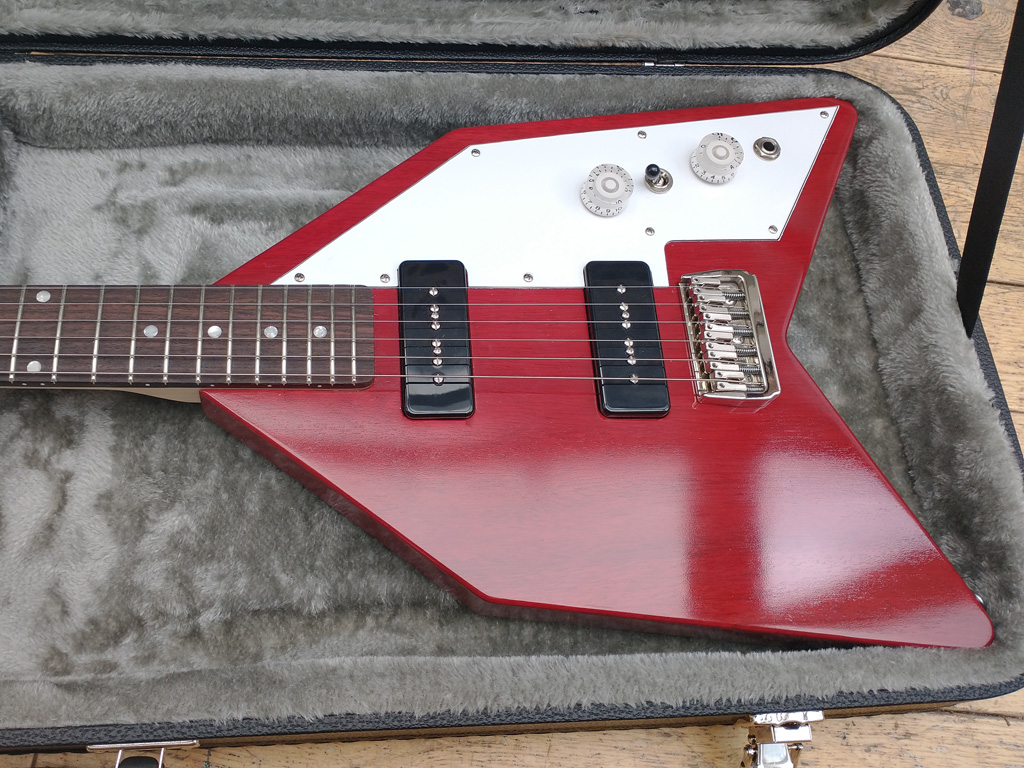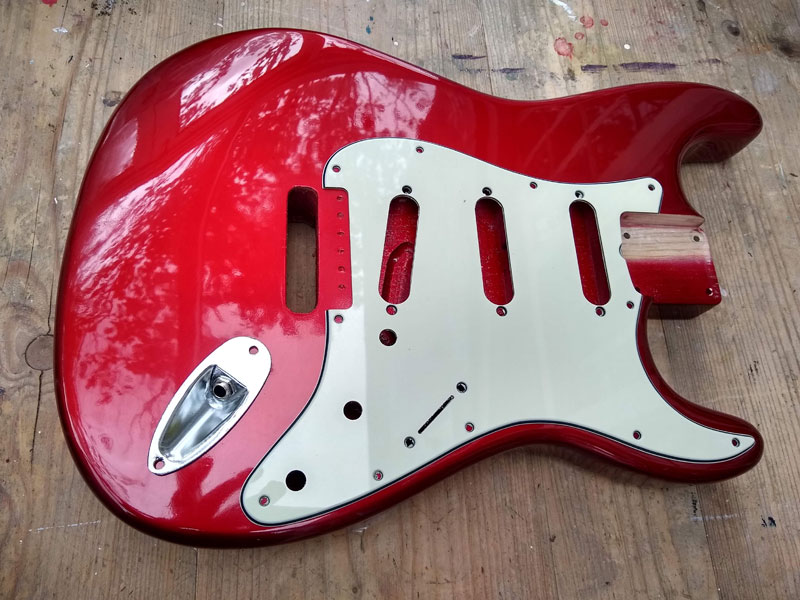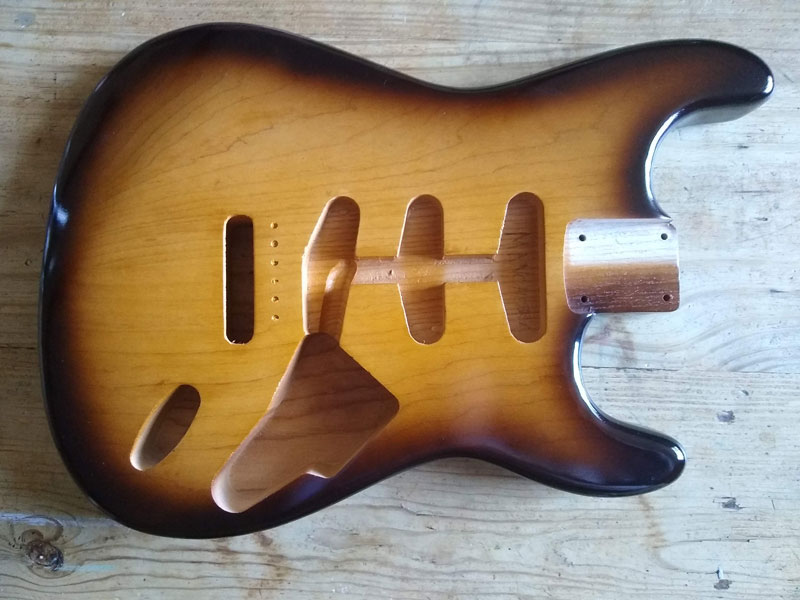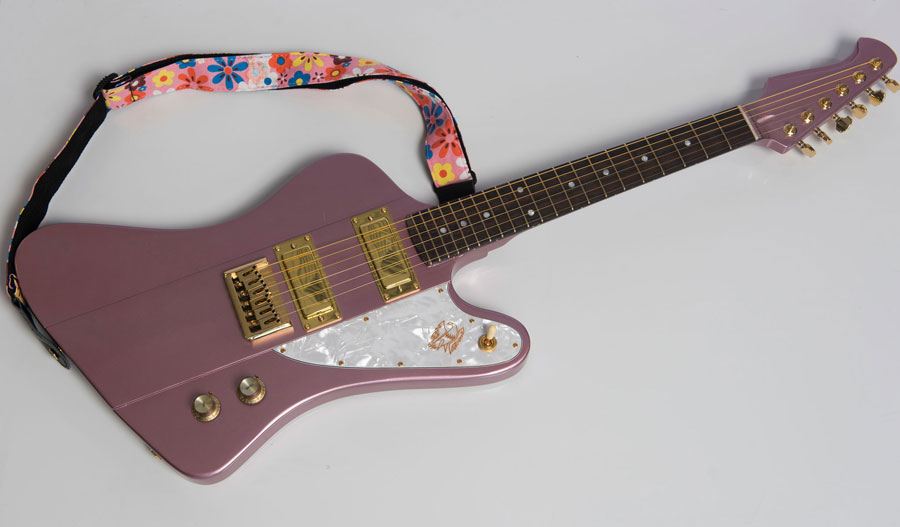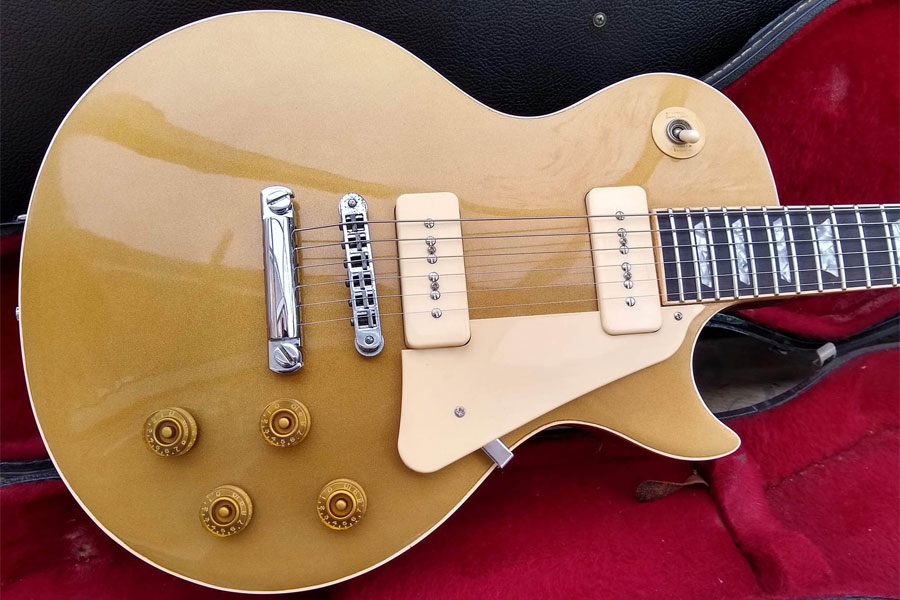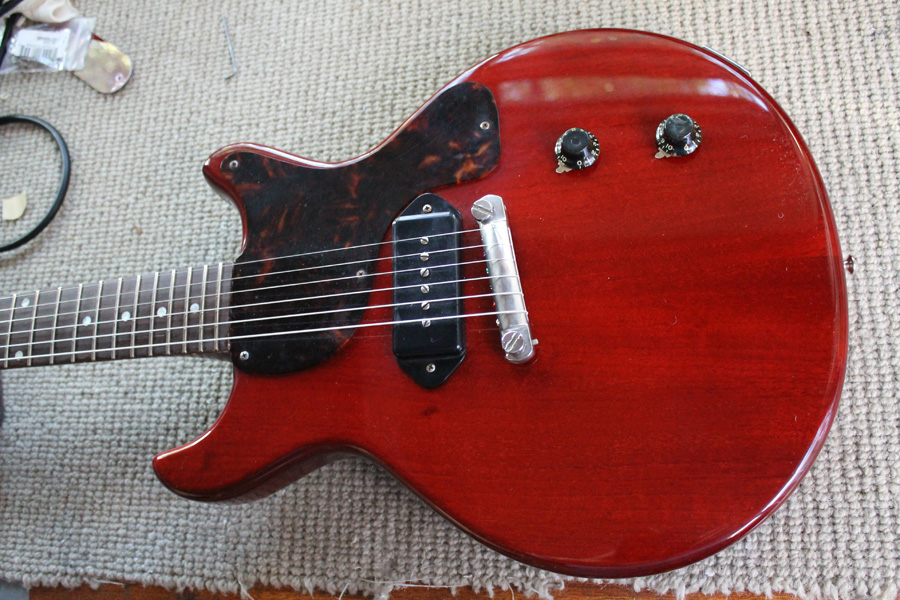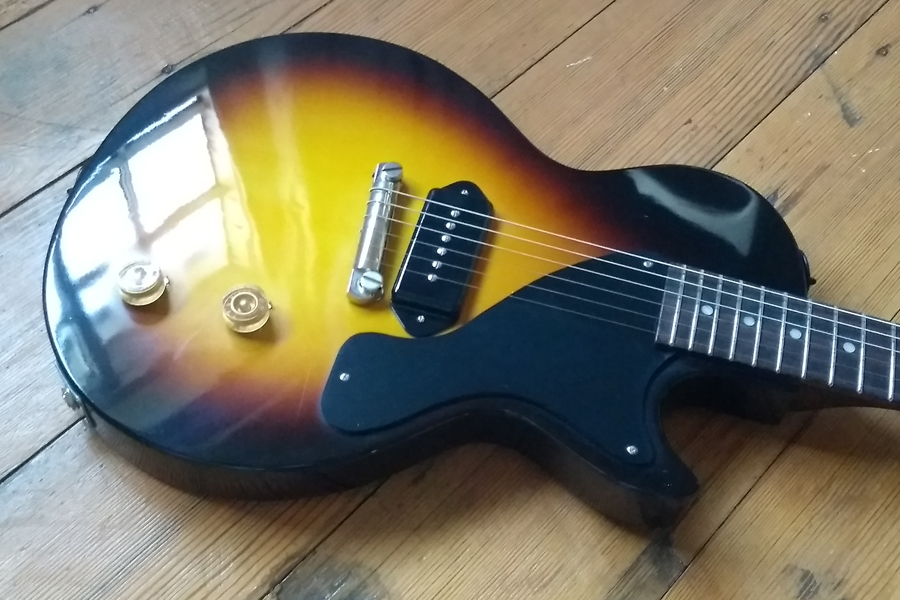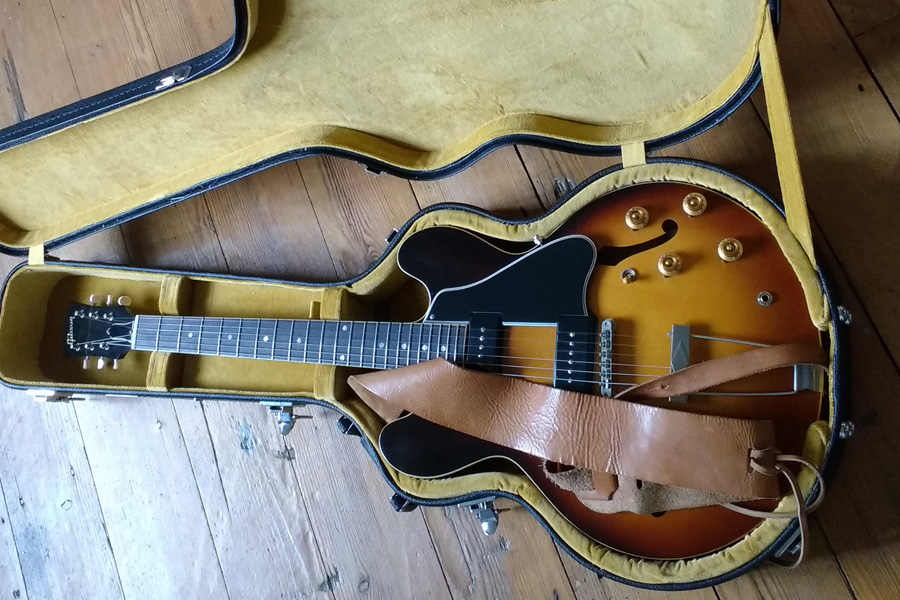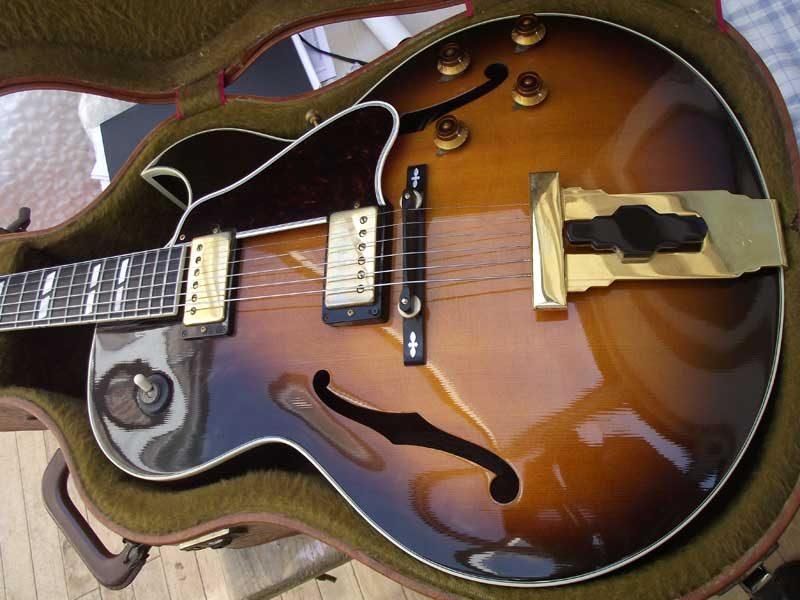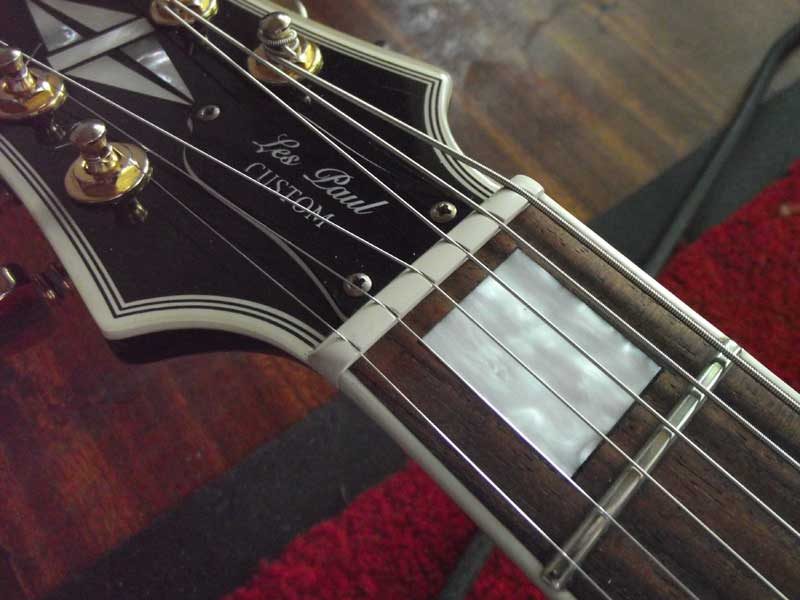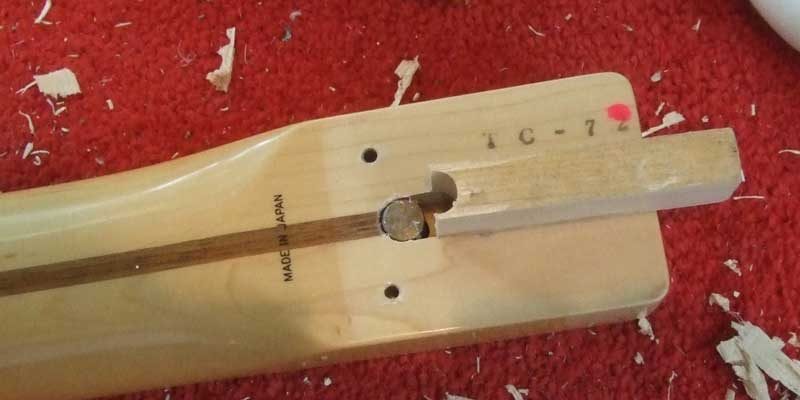
Ozzy Lister – guitar and bass repair
This beautiful 1989 Gibson L4 CES was brought in with a bad electrical buzz.
I traced the buzz to a disconnected bridge earth wire which I reconnected.
I noticed however that at some point early in its life the guitar had been rewired with different pots. The pots have solid shafts and whoever did the work thought it a good idea to glue the knobs to the pots!
Who in their right mind would do such a thing to an expensive (or any) guitar is totally beyond me!
Here’s a lefty Epiphone Les Paul that I upgraded the other day.
The list of upgrades is:
- Tusq nut
- fret dress
- rewire
- setup
Tusq nut
The nut on the guitar was a cheap hollow plastic replacement that had poorly cut string slots causing tuning problems. A new Tusq nut sorted that out.
Rewire
The existing electrics were the usual low quality components found on these 90s Epiphones. The switch didn’t switch (both pickups on in all 3 positions) and the tone controls were pretty ineffective with no noticeable difference in sound throughout their sweep.
I rewired using reverse-log taper CTS pots, a Switchcraft jack and a new switch. Interestingly the guitar was fitted with correct left-handed knobs with the numerals 1-10 running clockwise around the skirt.
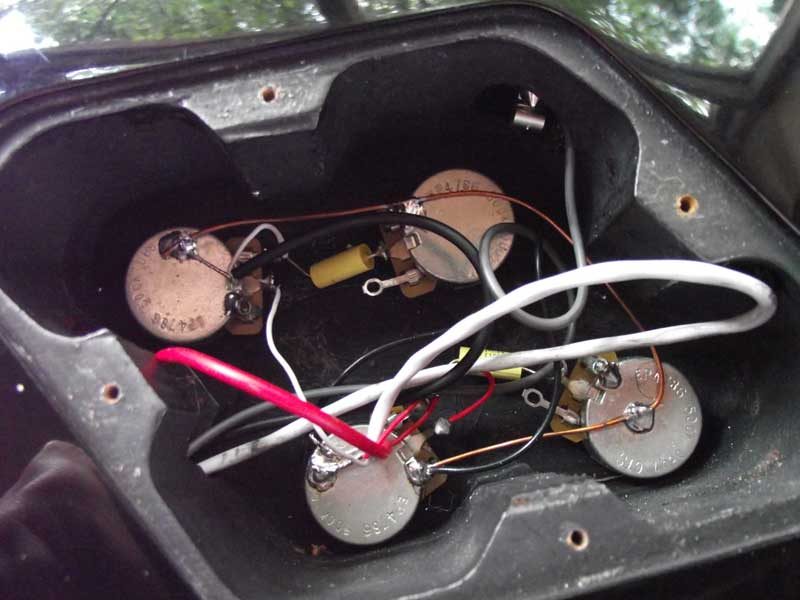
Setup
A fret dress and full setup completed the job. Typically the bridge saddles were deeply grooved so I dressed them down, cut accurate string slots and made sure that the radius matched the fretboard.
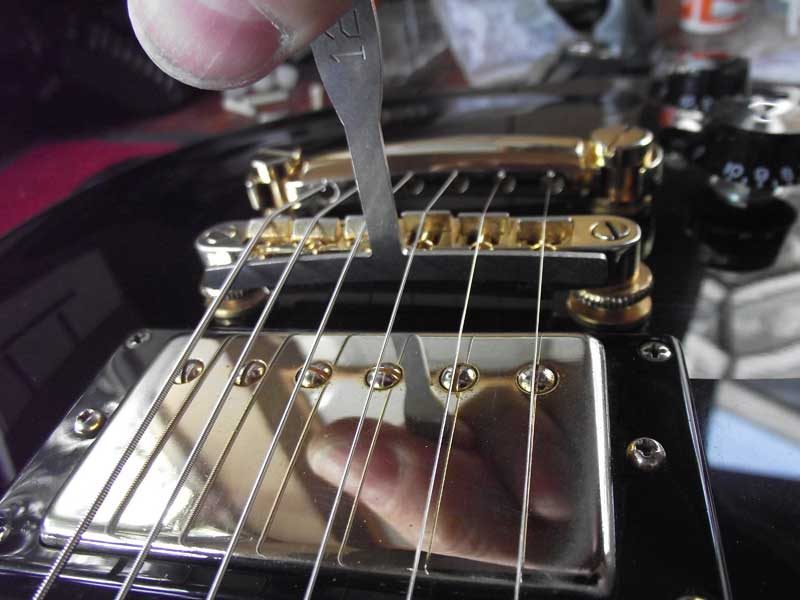
I was brought a Fender Japan 70s reissue Telecaster with a broken truss rod for repair. The threaded part truss rod had broken at the headstock.
I extracted the truss rod from the heel of the guitar and found that there was still over 1cm of thread left on the end. My solution therefore was simply to move the truss rod forward in the heel by 1cm, and hold in place with a maple fillet.
Once the neck was refitted there was no sign of the repair as it is all hidden in the neck pocket and as no parts were required, it was an inexpensive repair for my customer!

